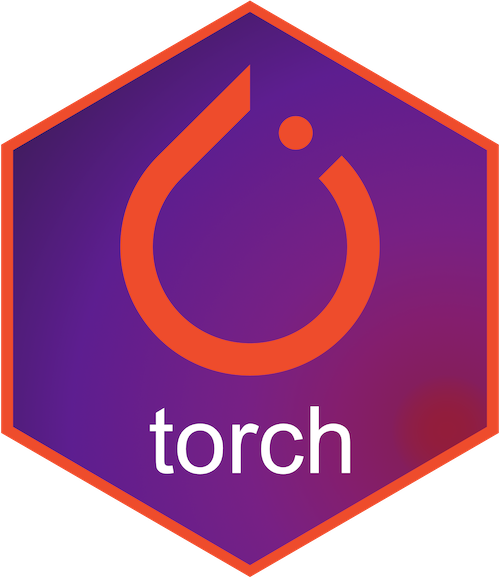Description
Tensors and Neural Networks with 'GPU' Acceleration.
Description
Provides functionality to define and train neural networks similar to 'PyTorch' by Paszke et al (2019) <doi:10.48550/arXiv.1912.01703> but written entirely in R using the 'libtorch' library. Also supports low-level tensor operations and 'GPU' acceleration.
README.md
torch 
Installation
torch can be installed from CRAN with:
install.packages("torch")
You can also install the development version with:
remotes::install_github("mlverse/torch")
At the first package load additional software will be installed. See also the full installation guide here.
Examples
You can create torch tensors from R objects with the torch_tensor function and convert them back to R objects with as_array.
library(torch)
x <- array(runif(8), dim = c(2, 2, 2))
y <- torch_tensor(x, dtype = torch_float64())
y
#> torch_tensor
#> (1,.,.) =
#> 0.6192 0.5800
#> 0.2488 0.3681
#>
#> (2,.,.) =
#> 0.0042 0.9206
#> 0.4388 0.5664
#> [ CPUDoubleType{2,2,2} ]
identical(x, as_array(y))
#> [1] TRUE
Simple Autograd Example
In the following snippet we let torch, using the autograd feature, calculate the derivatives:
x <- torch_tensor(1, requires_grad = TRUE)
w <- torch_tensor(2, requires_grad = TRUE)
b <- torch_tensor(3, requires_grad = TRUE)
y <- w * x + b
y$backward()
x$grad
#> torch_tensor
#> 2
#> [ CPUFloatType{1} ]
w$grad
#> torch_tensor
#> 1
#> [ CPUFloatType{1} ]
b$grad
#> torch_tensor
#> 1
#> [ CPUFloatType{1} ]
Contributing
No matter your current skills it’s possible to contribute to torch development. See the contributing guide for more information.

